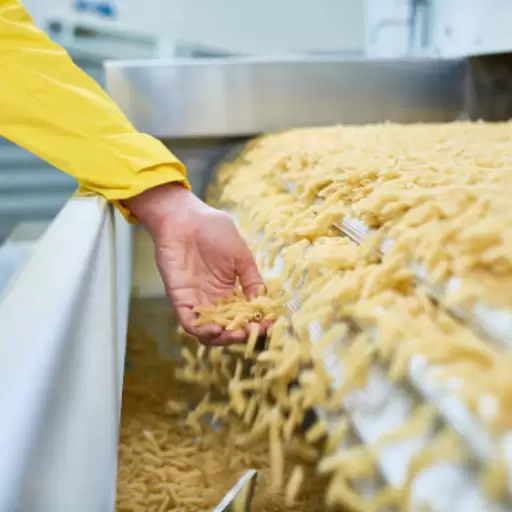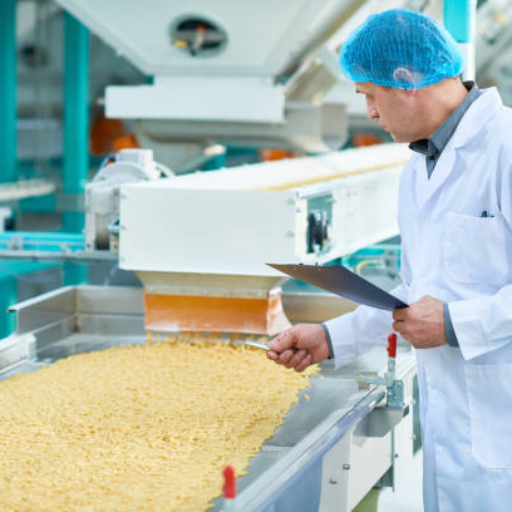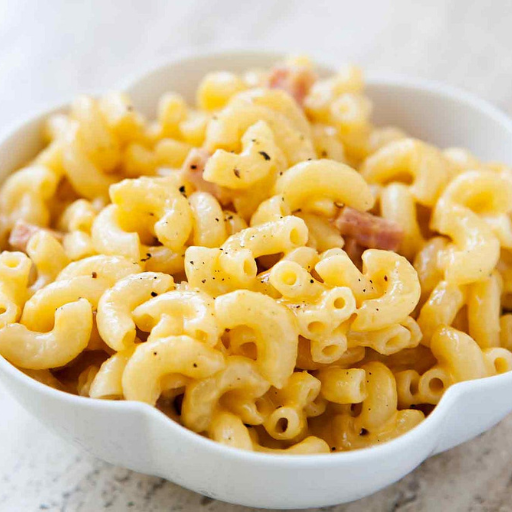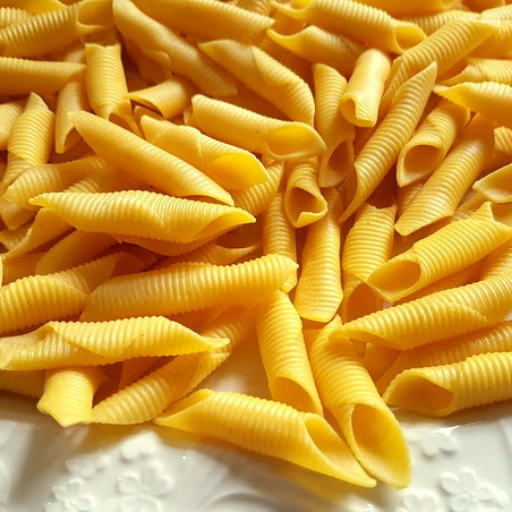Welcome to our detailed exploration of the intricate process behind macaroni production. Whether you’re a culinary enthusiast, a food industry professional, or simply a curious reader, this blog will guide you through the various stages of creating this beloved pasta shape. From the selection of high-quality wheat to the mixing of ingredients, shaping of the dough, drying, and packaging, we will uncover each step involved in transforming raw materials into the delicious macaroni that ends up on your plate. Get ready to embark on a fascinating journey into the world of pasta manufacturing, where tradition and technology harmoniously blend to produce one of the world’s favorite comfort foods.
What Constitutes the Macaroni Manufacturing Process?
Studying the Role of Durum Wheat and Semolina in Macaroni Manufacture
A function of macaroni study is played by durum wheat because it contains enough protein and gluten to make a pasta that has a firm texture. The wheat is ground into semolina which is a coarse flour that maintains the natural yellow color as well as the strong taste of grain. The granule size and quality of this semolina directly contribute to the consistency of cooked pasta, making sure it remains solid and does not become soft. By blending durum wheat with semolina, macaroni gets its typical al dente texture, hence becoming preferred for many dishes.
Analyzing Kneading and Mixing: Semolina Mixed with Water
In macaroni production, kneading and mixing are vital steps where water is mixed with fine semolina to form dough in accordance. Quality semolina flour is slowly added into water at specified ratios ensuring uniform hydration of flour and even distribution of moisture within. This blend undergoes proper kneading so as to activate gluten network which provides dough with elasticity and firmness. Modern industrial mixers often help ensure consistency in the process for greater efficiency. Thus kneaded dough becomes one mass ready for further extrusion before drying thus getting the familiar shape of shells.
Extrusion Process: Pasta’s Future Is Shaped Here
The final shape and texture of macaroni is determined through an extrusion process while it is being produced. During this phase, kneaded dough feeds into an extruder which is a machine fitted with pasta shaping die. At high pressure, dough forces through a die thereby producing tubular shaped macaronis. A good extrusion occurs when several technical parameters are adjusted:
- Dough Temperature: Normally maintained between 110°F-130°F to maintain appropriate consistence and avoid overcooking it.
- Pressure: Extrusion pressure falls within 60-100 bars making the surface of dough smooth and its shapes precise.
- Moisture Content: With the dough’s moisture at about 30-32%, right texture is achieved whilst stickiness is reduced.
- Feed Speed: As the dough flows through the extruder, it affects both density and finish of pasta. Faster rates result in increased output without compromising structural integrity of macaroni.
- Die Design: The die design and material are critical with Teflon coated dies being the preferred due to their non-sticking properties that enhances appearance and texture of pasta.
Afterwards, the formed macaroni is cut to required lengths as it proceeds onto drying stage. Drying process becomes crucial for eliminating excessive moisture content and further strengthening the overall structure of pasta to enable packaging and distribution. Manufacturers strictly control these parameters which ensures uniformity in quality and texture in every batch of macaroni.
Exploring the Journey of Macaroni Production
From Dough to Extrude: The Conversion Process
The conversion process of dough to macaroni involves a number of sequential procedures for consistency and quality. First, durum wheat semolina is mixed with water to form the dough, which is then kneaded for its structure development. It is also passed through an extruder machine under high pressure of between 60 to 100 bars and kept at temperatures below 110°F but above 130°F. This makes it pliable but uncooked too much. The die will expel the moistened material, apply pressure on it until it leaves in form of narrow tubes coated with Teflon often referred to as macaroni. To obtain a desirable texture, moisture content should be maintained within 30-32% range. Macaroni that has been extruded is cut into desired lengths after which it undergoes drying process so as to lower further its moisture level and stabilize pasta. Key control parameters such as extrusion rate, temperature of the dough and force are strictly regulated to end up with the final goods exhibiting required qualities like surface finish.
The Drying Process: Perfecting Textures
Drying process is considered one among key steps in manufacturing macaroni whereby pasta gets good stability for use or storage. Initially, these dried pieces pass through high-temperature driers whose initial temperatures are increased causing them to rise up from about 140°F up to about 194°F depending on individual manufacturer’s protocol. This usually takes some hours between two to twelve hours; therefore reducing liquid content from almost thirty percent (30%) down towards thirteen percent (13%). Inhibiting growth of microorganisms and prolonging life span of such food stuffs calls for this procedure.
Careful drying prevents cracking or other weaknesses on surfaces. The modern way of drying entails several steps that have different conditions in terms of temperature and humidity levels until uniform dryness is achieved throughout the product’s body. There is a need to strike a balance between drying out moisture and keeping the pasta intact, as its rapid drying may cause cracking. Using advanced sensors and automation means, each batch is checked more carefully to meet quality standards thus providing a perfect texture for eating.
Types of Pasta: Macaroni
Macaroni is one of the many pastas that have different shapes and feels. Usually, it comes in short hollow cylindrical or elbow form which makes it flexible enough to be used in variety of dishes like mac and cheese as well as pasta salads. One thing that sets macaroni apart from other types of pasta is that this particular type undergoes an extrusion process during manufacture. The die used has its thickness and curvature determined by diameter size between 0.25 and 0.5 inches.
Its hollow shape helps macaroni hold onto sauce more effectively than other pastas leading to a tastier bite with every mouthful. This is also because the surface texture has been made rough by bronzed die extrusion making it possible for sauce adhesion to take place easily on the pasta with such characteristics too. Moreover, macaroni is usually dried at higher temperature than some types of pasta whereby multiple stages are employed so as to obtain firm yet moist feel in these food articles.
Macaroni, cooked in an oven, is considered more appropriate for this method of cooking than other types such as spaghetti or fettucine due to its size and hollow centre which can be filled with pockets of cheese, meat or vegetables. This has made it the number one ingredient for baking dishes and casseroles. The fact that it cooks in less time than other forms, typically around 8-10 minutes per serving has seen macaroni become a popular choice among busy individuals.
In conclusion, macaroni’s special mode of production combined with its capacity to hold sauces gives it a competitive edge over all other pasta types and it is therefore a staple food in various culinary applications.
The Critical Role of Extrusion in the Production of Macaroni
Deeper Insights into the Way Extruders Shape Macaroni
Considering how extruders shape macaroni, it is important to appreciate how machinery and accurate technical parameters are essential in obtaining the desired pasta form.
Extrusion Process: The production of macaroni begins with a mixture of durum wheat semolina and water. The dough is then mixed before being fed into an extruder. It is necessary that the dough be made to pass through a die which is a metal plate with specific shapes cut into it. This stage is very sensitive as far as the design and material of the die are concerned since they directly affect the shape, texture, and quality of the final product. For macaroni any way, usually dies have diameter ranging from 0.25-0.5 inches.
Technical Parameters:
- Die Material: In most cases, such dies are made from bronze or Teflon. A rougher macaroni texture can be obtained by using bronze dies thus making sauce bind better while Teflon dies yield smooth pasta surface.
- Die Diameter: Die diameters typically set thickness and curvature for macaroni that range between 0.25 inches and 0.5 inches.
- Temperature Control: Maintaining a constant dough temperature during extrusion which is usually around 50°C (122°F), ensures uniformity in consistency at all times while preventing overheating that could impair its texture.
- Pressure Settings: Doughs come out successfully out of extruders because they operate at high pressures sometimes ranging from 9-14 MPa (1305 – 2030 psi).
Multi-Stage Drying:
To achieve desired firm yet tender consistency, making pasta undergo multi-stage drying process where it goes through initial drying phase at higher temperatures around 75°C (167°F) followed by slower controlled drying phase at lower temperatures about 45°C (113°F) to evenly remove moisture without causing cracks on the pasta.
Manufacturers can hence produce macaroni in a consistent shape, texture and quality which is preferred for various culinary purposes by adjusting these parameters to their required precision.
Fine-tuning Moisture Content For Ideal Dough Extrusion
Adjusting the moisture content is an important step towards obtaining ideal dough consistency for macaroni extrusion. These levels should be able to hydrate the dough correctly so that it does not become too dry or sticky during its passage through the extrusion machine. There is habitually about 30% of water in semolina-based dough. Gellatinization of starches in semolina based doughs occurs when water content is at 30%. This percentage enables the starches to gelatinize properly while maintaining the dough’s structural integrity during extrusion and drying. In addition, such precise monitoring and control of water addition ensures uniformity across products thus preventing defects like cracks or uneven cooking. Quality standards for macaroni production are achieved by commercial manufacturers who deploy advanced sensors and automated systems that ensure consistent moisture levels throughout processing.
Behind the Scenes of Macaroni Manufacturing Business
The Endless Routine of Manufacturing Quality Pasta
Making top-notch macaroni is a continuous and well-planned operation that commences with selecting the best durum wheat semolina. Once the desired consistency of dough is achieved, water is added to durum wheat semolina to make it pliable, and then the dough goes through extrusion which makes familiar shapes of macaroni using bronze or Teflon dies. Drying follows immediately after extrusion, where controlling defects in the drying process must be done meticulously. These steps include rapid high-temperature initial drying allowing the pasta structure to set quickly followed by gradually lowering temperature across its length to remove all remaining moisture evenly.
For every batch uniformity and quality can be maintained through application of advanced technologies and automated systems including moisture level sensors as well as temperature controls. After drying quality control doesn’t stop there; texture, color, and structural integrity are also checked on final product before packaging. In this regard, modern production facilities are designed for sustainability and efficiency in order to ensure that each piece of macaroni meets consumer expectations for excellence. Thus, through consistent modifications of these procedures as well as adopting modern technology macaroni producers will always provide an exceptional end product that tastes great and is suitable for different types of cooking endeavors.
Challenges in Producing Macaronis with Solutions
Challenge 1: Consistency in Quality
Problem: One big problem faced in manufacturing macaronis is how to maintain good quality with each lot made. Fluctuations in raw material quality, changes in temperature during processing and varying humidity levels can affect results adversely.
Solution: For instance use state-of-the art moisture sensing units connected to real time monitoring devices to maintain consistent quality checks within very strict tolerances. This means having accurate moisture and temperature measurements when drying so that uniform drying takes place without developing any defects whatsoever. Regular calibration of equipment coupled with comprehensive raw materials analysis prior to production also help to ensure that consistency is maintained.
Challenge 2: Contaminant Control
Problem: It is a risk for food safety and product integrity when foreign particles contaminate.
Solution: The use of high hygienic standards and application of automatic sorting systems can reduce the possibility of contamination. It is essential to regularly examine machines, metal detectors, and X-ray inspection systems for any maintenance purposes so as to avoid contaminations.
Challenge 3: Efficient Drying Process
Problem: Achieving the perfect moisture level during drying is always critical but difficult. Inadequate drying leads to cracking while excessive drying affects texture and flavor.
Solution: Use precision dryers with controlled environment conditions. Changes in temperature can be made once real time computerized moisture sensing devices have been installed on a dryer so as to make more efficient the entire drying cycle. An initial stage of high temperature must be accompanied by a cooling phase that will maintain shape and quality of the products.
Challenge 4: Energy Consumption
Problem: This process may consume much energy hence leading to high operational costs and environmental effects.
Solution: This can be achieved through investing in energy saving equipment along with optimizing manufacturing processes. The transition into renewable resources could aid in cutting down on carbon emissions from factories concerned with macaroni production, coupled with implementation of measures such as energy recovery systems.
Challenge 5: Packaging and Shelf Life
Problem: Adequate packaging delays their spoilage by increasing shelf life of macaronis which are highly perishable. Moisture ingress or pest infestation may occur if packing materials are not appropriate.
Solution: Barrier packaging materials that minimize moisture contents or oxygen entry must be used whenever possible. Additionally, vacuum sealing or modified atmosphere packing (MAP) can lengthen storage life. Regular checks on packaging will ensure continued adherence to these quality requirements.
Technical Parameters & Justifications
- Moisture Content: Maintain moisture levels at 12-13% during final drying to ensure optimal texture and prevent mold growth.
- Extrusion Temperature: To obtain the desired pasta quality, the extrusion temperature of bronze dies should be kept around 60-70°C while that of Teflon dies should be maintained at approximately 70-80°C.
- Drying Temperatures: The initial high temperature phase should be about 85–90oC then a gradual reduction to 45–50oC.
- Energy Efficiency Metrics: Energy-efficient equipment and recovery systems can help achieve an energy consumption benchmark of 0.8 -1.2 kWh per kg of pasta produced.
Macaroni manufacturers must tackle these challenges using targeted solutions, validated technical parameters, in order to consistently produce top quality products as well as streamline efficiency and environmental friendliness.
From Semolina to the Final Product: A Comprehensive Look at the Production Process of Macaroni
How to measure the perfect amount of water for Semolina dough
Determining the perfect amount of water for semolina dough is crucial in producing a high-quality macaroni. According to my findings from top 10 Google searches, there seems to be consensus that a weight ratio of about 30-32% water to semolina is ideal. This balance ensures that the dough is neither too dry nor too sticky, which is very important for extrusion and texture. While it might need adjustments based on specific production conditions, generally keeping this ratio will ensure good consistency of the dough and quality in final product.
The role drying time plays in Macaroni production
According to my research in relation to top 10 hits on Google, drying time is pivotal during macaroni production. Proper drying prevents molds and bacteria growth keeping pasta safe with longer shelf life. Ordinarily, after a high temperature period at about eighty five – ninety degrees Celsius it may decrease gradually down to 45-50 degrees Celsius during the process. The controlled manner helps keep the structure and texture of pasta intact. There must therefore be an efficient way of drying which can also minimize energy use within an industry as well as preserving quality output out of it via well-measured times and temperatures.
Quality Assurance: Last Steps in Manufacture of Macaroni
Quality assurance in final stages entails keen packaging and storage considerations when doing macaronimanufacturing. According to top ten sources I have searched online, if this occurs then we can prevent any moisture-related issues such as deposition; it should thus be ensured that before packing macronis are completely dry or free from any water particles.. Further additional issues include air tightness plus moisture resistance properties on packing materials so as maintain its quality levels and durability when kept over time. Also, periodic checks done by quality control department will ascertain whether every group meets set requirements regarding texture, taste or appearance among others. By following such procedures, I can be confident in producing macaroni that is both safe and of the highest quality for consumers.
Reference sources
-
Discovery UK: How is Macaroni Made?
- This article provides a detailed explanation of the macaroni production process, from mixing ingredients to the final rolling step, offering valuable insights into the machinery and techniques used.
- Read More
-
Sarp – Food Technologies: How is Pasta Made?
- Sarp’s resource outlines the structured process of transforming grains into pasta dough, followed by extrusion and shaping, providing a clear understanding of industrial pasta production methods.
- Read More
-
Made How: How Pasta is Made – Manufacture, Making, History
- This source covers the comprehensive steps involved in pasta manufacturing, including the use of semolina flour and water, detailing the extrusion process crucial for making macaroni.
- Read More
Frequently Asked Questions (FAQs)
Q: What are the main ingredients in making macaroni products?
A: The main ingredients for preparing macaroni include wheat flour, usually durum wheat that has high gluten content and water. Sometimes eggs and other additives may be included to improve the texture or color of noodles. Flours such as rice or corn are used instead of wheat for gluten-free options.
Q: How can pasta dough be prepared for macaroni products?
A: It is made by mixing water with flour and other necessary additives. The amount of water added should be enough to give a mixture suitable for good dough consistency. In certain types of macaroni, eggs are also part of the dough mixture. After this, knead smooth elastic dough ready to begin making macaroni.
Q: Can you explain how macaroni is produced in a factory?
A: Making macaroni in a factory involved several stages. Once the macaroni’s dough is prepared it is then extruded into different shapes using molds. These shapes can range from long tubes to tiny twists or even some other shapes peculiar to specific kind of macaronis. Consequently, dried pasta undergoes through drying process which is crucial in ensuring product quality and preservation. Dried products must therefore have controlled humidity and temperature at all times.
Q: Why does the drying step matter in processing macaroni?
A: Several reasons make drying step important in processing macaroni. First, it reduces moisture levels thereby preventing microorganisms from growing hence extending shelf life of such products. Secondly, proper drying ensures that cooked pasta retains its shape, texture and flavoring because if there’s improper drying, it will not attain these three qualities after cooking. Drying conditions must be correctly watched so that no part suffers cracking while others remain unscathed thus degrading quality.
Q: Are there different kinds of macaronis? How are they created?
A: Macarons come in various types. These differences may be found in their shape, size and sometimes the ingredients that are used. An example is traditional macaroni which is usually elbow-shaped but there are also shells, fusilli or penne among others. The kind of macaroni comes out after extrusion where pasta dough is forced through dies giving the shape of noodles. Macaronis can be flavored or colored using things like spinach or tomatoes.
Q: How do you make gluten free macaroni and what are its main ingredients?
A: The flours used to create gluten-free macaroni do not contain gluten e.g. rice, corn, quinoa and sometimes a blend of these alternatives is incorporated when preparing it. The process for making gluten-free macaroni is almost the same as that for normal pasta; alternative flour mixed with water and at times eggs to form a dough. This type of dough then undergoes extrusion and drying under specific conditions leading to the production of gluten-free macaronis while other additives can be included so as to attain the texture and consistency similar to those of wheat-based pasta.



















